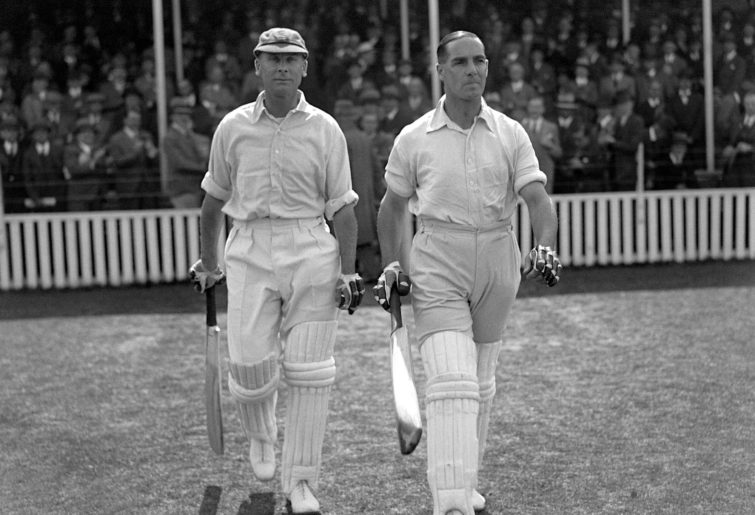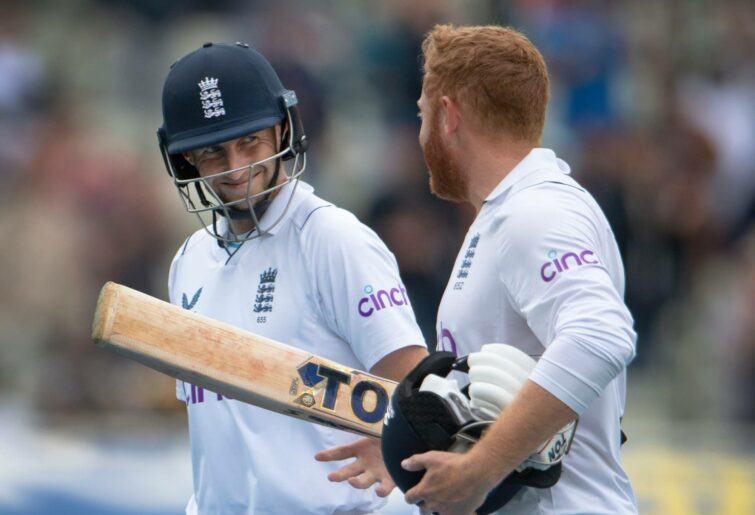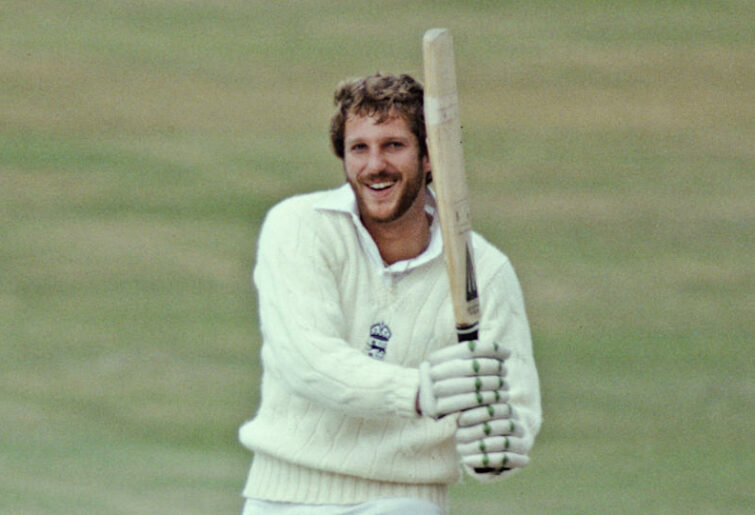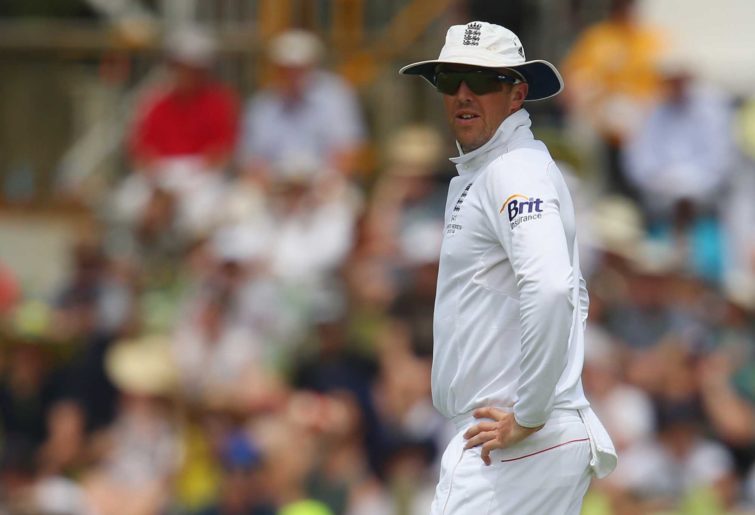Our quest to uncover the best Test XI brings us to England, the ancestral home of the sport. With its vast global reach, through the British Empire, cricket would eventually spread to many nations and would eventually flourish as one of the pre-eminent global sports.
But still everything we have come to know and love about the sport originated from this tiny island nation.
England would become one of the first two nations to play in an official Test match against Australia.
The match took place in 1877, which was 320 years after its humble beginning as a children’s pastime in the 1550s, and sparked a movement that would catapult the sport into a truly global phenomenon.
England to this day remains the traditional home of cricket, with Lord’s Cricket Ground referred to in this way. The international governing body was formed in 1909 to help oversee the forming of a thriving international Test competition, and from 1909 to 2005 this body was based in England.
The Marylebone Cricket Club was founded in 1787 and is based at the famed Lord’s in London. For much of cricket’s history they were responsible for the rules of the game, and any changes were implemented through the MCC. This cricket club is still the copyright owner of the laws of cricket, and until 1989 the president of the MCC automatically assumed the role of chair of the ICC.
England lost the first Test match to Australia, and the subsequent rivalry between the two nations, known as the Ashes, would grow into one of the most famous sporting rivalries in the world – a rivalry so intense that the scramble for supremacy that it soured diplomatic relations between the two nations following the scandalous tactics implemented by Douglas Jardine’s English cricket team in the infamous Bodyline series of 1933, which reshaped the sport itself.
Despite the international growth and development of the game, England remains an incredibly influential part of the governance of the sport and its teams have boasted some of the very best players to have ever played.
Those players have helped England take the mantle as the best team in the world many times throughout its history. Of its 1055 Test matches, it has won 384 of them, with 354 drawn games.
With such an extensive history and factoring in how much the game has changed over the years, narrowing down all of these talented cricketers was a difficult feat. While there will always be some conjecture on the many talented players who miss out when you have a talent pool this deep, I feel this team balances the titans of yesteryear with some of the modern greats and the challenges they had to face.
Jack Hobbs
Tests: 61, batting average: 56.94, high score: 211
The list of accolades is immense for the batsman known as ‘The Master.’ He’s the all-time leading first-class run scorer with over 60,000 first-class runs and 197 hundreds. He was also named one of five cricketers of the century. Boasting an eye-watering average over 56 while having to deal with opening the batting on uncovered pitches in English conditions places him among the very best to ever play.
Coming onto the scene as a dynamic batsman with mixed results, he served in the Royal Flying Corps during World War I, but when a bout of appendicitis threatened to end his career he returned to the international game a more cautious batsman, which helped his consistency. The floodgates opened, and he scored prolifically at first-class and Test level.

Jack Hobbs (left), and Herbert Sutcliffe. (Photo by PA Images via Getty Images)
Len Hutton (captain)
Tests: 79, average: 56.67, high score: 364*
Wisden Cricketers’ Almanack describes Hutton as one of the greatest batsmen in the history of cricket. His career overlapped with Donald Bradman’s, and while he didn’t enjoy the same run-scoring exploits of his Australian counterpart, his name was often held in similar esteem when it came to English cricket. His score of 364 was the highest score in Test cricket at the time.
His career was also impacted due to the Second World War, in which he suffered a serious arm injury that never completely healed. Hutton altered his batting style, but his appetite for runs continued. He was the first professional cricketer to captain England and was instrumental in regaining the Ashes after a 19-year drought.
Wally Hammond
Tests: 85, average: 58.45, high score: 336*
Arguably the most prolific batsman England would have for the 20th century. He was an elegant attacking batsman who often made easy work of treacherous conditions. His total of 7249 runs would stand as the highest English aggregate from his retirement in 1947 until 1970, and it would take until 2012 for his 22 Test centuries to be bettered by an English batsman.
He was a very effective medium-pace bowler, with many of his teammates saying if it weren’t for a reluctance to bowl, he’d have been an effective all-rounder. His 732 first-class wickets at an average of 30 highlighted his ability.
Joe Root
Tests: 124, average 50.01, high score: 254
He’s one of two players in this side currently still plying their craft. Root is the second leading run-scorer for England. An elegant, aggressive stoke player, Root has succeeded in all countries save Australia. During the mid-2010s Root entrenched himself as part of the ‘big four’ batsmen, who were considered the elite of the world’s batting stocks. After struggling in the middle of his career to convert his 50s into 100s he has enjoyed one of the most fruitful periods of run-scoring ever seen and has piled on the tons, taking his total to 28.

(Photo by Visionhaus/Getty Images)
Kevin Pietersen
Tests: 104, average: 47.28, high score: 227
The No. 5 position could have gone to an obscene number of worthy candidates. Pietersen, who hails from South Africa, made an instant impact after leaving his father’s homeland for his mother’s. Immediately brought into the side after serving his naturalisation period, he went on to be one of the very best players in the world regardless of format.
Coming into the side after a period in the late 1990s and early 2000s, when England struggled, Pietersen’s confident and aggressive stroke play helped change the English mindset and usher in a new era in which they regained the Ashes in 2005, achieved the No. 1 ranking in Test cricket and won a series in Australia all before the decade was out.
He has the second highest run total from his first 25 matches, falling behind only Don Bradman and as the fastest player in terms of days to 4000, 5000 and 7000 runs.
Ian Botham
Tests: 102, batting average: 33.54, high score: 208; wickets: 383, bowling average: 28.40
One of the premier all-rounders in cricket’s history, Bothams’ swashbuckling batting netted him 14 Test centuries, and his aggressive swing bowling had him hold the record for most wickets taken until New Zealand’s Richard Hadlee overtook him. He is the second player in history to complete the double of a Test hundred and a ten-wicket match.
The pre-eminent sports personality of his day, Botham had the innate ability to drag England to victory with pure inspiration, with no truer example than his talismanic performance during the 1981 Ashes series, in which his exploits with the bat and ball led to the series being dubbed Botham’s Ashes.

(Photo by Adrian Murrell/Allsport/Getty Images/Hulton Archive)
Alan Knott (wicketkeeper)
Tests: 95, average 32.75, high score: 135, catches/stumpings: 250/19
Considered by many to be the finest gloveman to ever play, Knott regularly made keeping in the most arduous conditions look completely mundane. During his first-class career he effected 1344 dismissals, and despite often being used as the example of the antithesis of modern keepers who hold their spots as a batsman first and for their glovework second, Knott was actually an impressive batsman in his own right, scoring five Test centuries and 30 fifties as well as cultivating a temperament of being the right man for any situation. His high score of 135 against Australia remains the highest score by an English wicketkeeper in an Ashes series.
Graeme Swann
Tests: 60, wickets: 255, average: 29.96
A late start to Test cricket, not earning his debut until 2008 at the age of 29, Swann quickly made up for lost time. By the end of 2009 he became the first English off spinner to take 50 wickets in a calendar year. In 2010 he became the first English off spinner to take ten wickets in a match since Jim Laker. He managed to take 4.25 wickets per game, which puts him behind only Sydney Barnes and Fred Trueman, and his average puts him right among the best modern spinners.
Swann played a big part in guiding England to the No. 1 ranking in 2011. A handy lower order batsman who could shift momentum when he got in, his career strike rate is the highest by any English batsman with 1000 runs or more.

(Photo by Mark Kolbe/Getty Images)
Fred Trueman
Tests: 67, wickets: 307, average: 21.57
He was the first man to reach the 300-wicket milestone, and many say he would have knocked off the 400 milestone if his career wasn’t peppered with missed tours and disciplinary breaches. He took eight for 31 on debut, which remains the best figures for a bowler on debut. Originally pace was his primary weapon, but as he developed he became a complete bowler, mastering swing and seam. A precursor to James Anderson in terms of longevity, with a first-class career spanning over 20 years, Trueman took 2304 wickets at 18.29 in 603 matches.
Sydney Barnes
Tests: 27, wickets: 189, average: 16.43
There isn’t really a bowling equivalent to Don Bradman, but Barnes is one of the few who you could make an argument for. Taking an average of seven wickets per game, Barnes simply destroyed his opponents with a mastery of swing, seam and the ability to make the ball break from either off or leg. He used his long fingers to make the ball spin with nearly no movement in his wrists, with nearby fielders often commenting they could hear his fingers snap but would have no idea which way the ball would turn. In his final Test series before retiring he took a record 49 wickets against South Africa.
James Anderson
Tests: 175, wickets: 667, average: 26.22
A model of consistency and longevity, Anderson ages like a fine wine. His ability to maintain his body to withstand the rigours of Test match fast bowling is unparalleled. Long criticised for his inability to perform away from the swinging conditions of England, Anderson has consistently improved all through his 30s and now 40s to be able to contribute on the frontiers of the Subcontinent and Australia, where he struggled in his early days.
He has taken more wickets than any pace bowler in history and would be on the short list for the best exponent of swing bowling. His early days were spent looking for the ‘magic’ ball to take wickets, but as he has matured he has combined his ability to bowl the ‘magic’ ball with unwavering control of line and length.
12th man: Herbert Sutcliffe
Tests: 54, average: 60.73, high score: 194
A career that spanned the years between the world wars, Sutcliffe forged himself into one of the pre-eminent batsmen and arguably second only to Bradman during his career. His average is the highest by an English batsman and fifth highest of all time for those who have played 20 matches or more. He was known as one of the best ‘bad wicket’ batsmen, and countryman Fred Trueman described him as “a terrible person to get out” and “at his best in a crisis”.
Honourable mentions
Alastair Cook, David Gower, Ken Barrington, Bob Willis, Derek Underwood, Jim Laker, Stuart Broad
This is a powerful team loaded with talent from top to bottom and featuring some of the very best to ever grace a cricket field, with many more not quite making the cut.
































































































